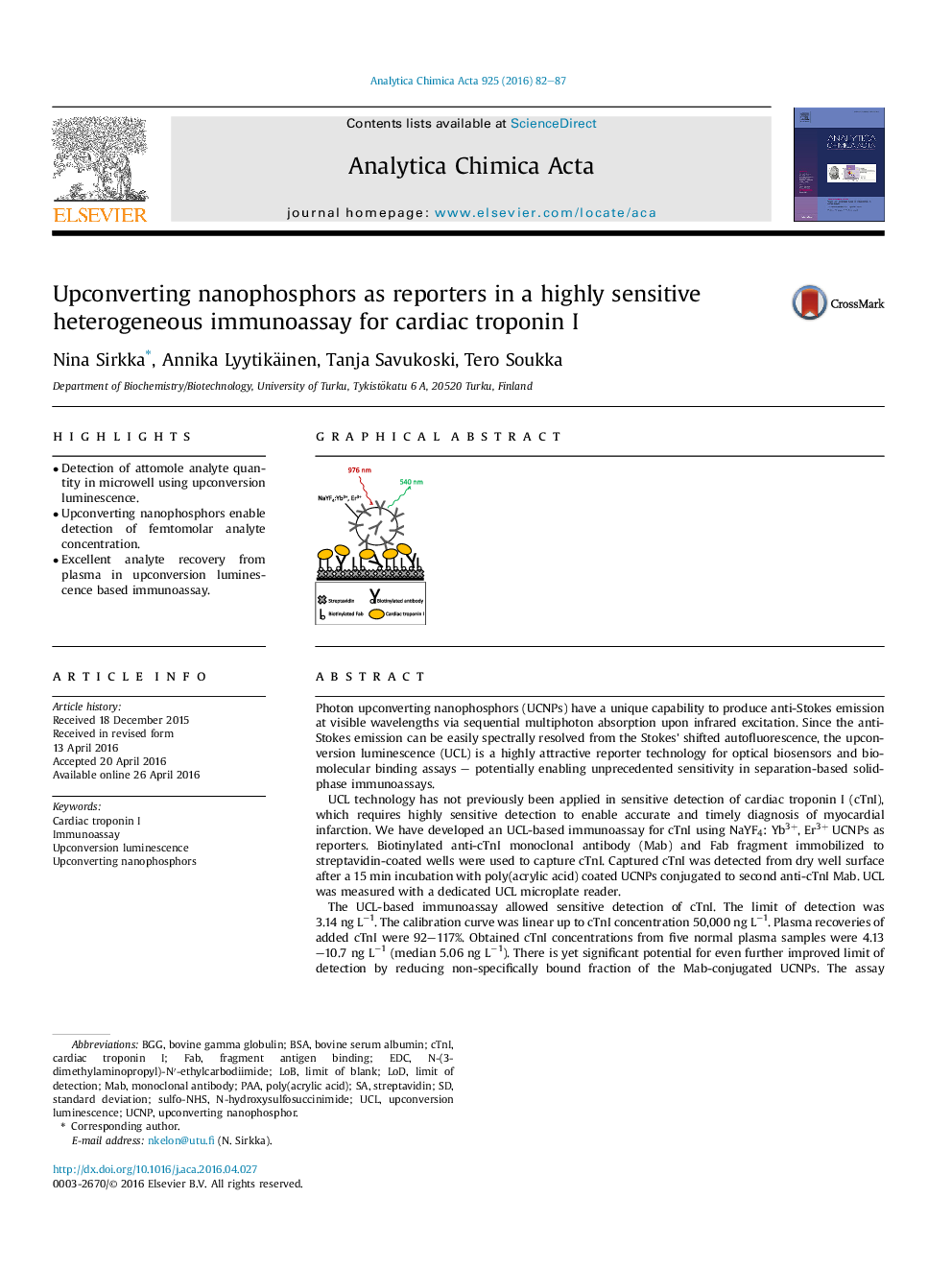| Article ID | Journal | Published Year | Pages | File Type |
|---|---|---|---|---|
| 1162774 | Analytica Chimica Acta | 2016 | 6 Pages |
•Detection of attomole analyte quantity in microwell using upconversion luminescence.•Upconverting nanophosphors enable detection of femtomolar analyte concentration.•Excellent analyte recovery from plasma in upconversion luminescence based immunoassay.
Photon upconverting nanophosphors (UCNPs) have a unique capability to produce anti-Stokes emission at visible wavelengths via sequential multiphoton absorption upon infrared excitation. Since the anti-Stokes emission can be easily spectrally resolved from the Stokes' shifted autofluorescence, the upconversion luminescence (UCL) is a highly attractive reporter technology for optical biosensors and biomolecular binding assays – potentially enabling unprecedented sensitivity in separation-based solid-phase immunoassays.UCL technology has not previously been applied in sensitive detection of cardiac troponin I (cTnI), which requires highly sensitive detection to enable accurate and timely diagnosis of myocardial infarction. We have developed an UCL-based immunoassay for cTnI using NaYF4: Yb3+, Er3+ UCNPs as reporters. Biotinylated anti-cTnI monoclonal antibody (Mab) and Fab fragment immobilized to streptavidin-coated wells were used to capture cTnI. Captured cTnI was detected from dry well surface after a 15 min incubation with poly(acrylic acid) coated UCNPs conjugated to second anti-cTnI Mab. UCL was measured with a dedicated UCL microplate reader.The UCL-based immunoassay allowed sensitive detection of cTnI. The limit of detection was 3.14 ng L−1. The calibration curve was linear up to cTnI concentration 50,000 ng L−1. Plasma recoveries of added cTnI were 92–117%. Obtained cTnI concentrations from five normal plasma samples were 4.13–10.7 ng L−1 (median 5.06 ng L−1). There is yet significant potential for even further improved limit of detection by reducing non-specifically bound fraction of the Mab-conjugated UCNPs. The assay background with zero calibrator was over 40-fold compared to the background obtained from wells where the reporter conjugate had been excluded.
Graphical abstractFigure optionsDownload full-size imageDownload as PowerPoint slide
